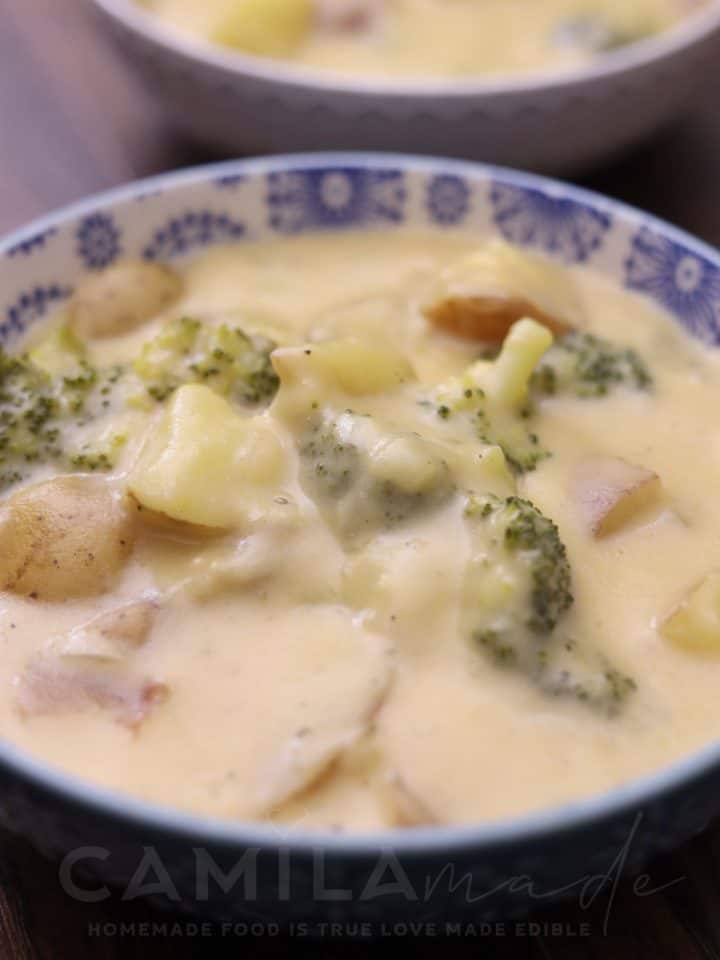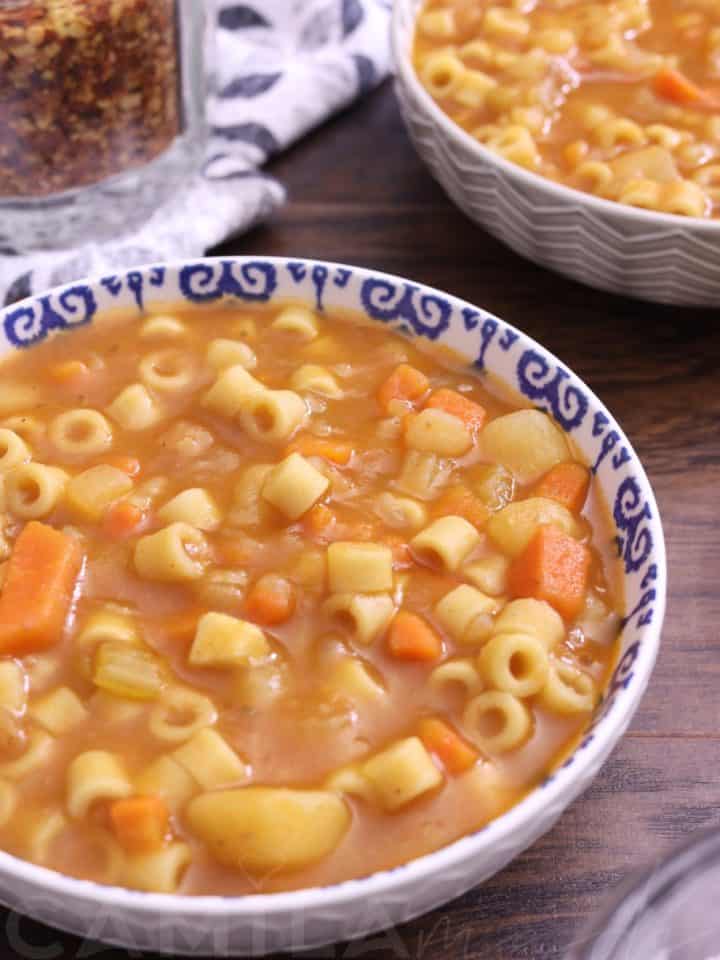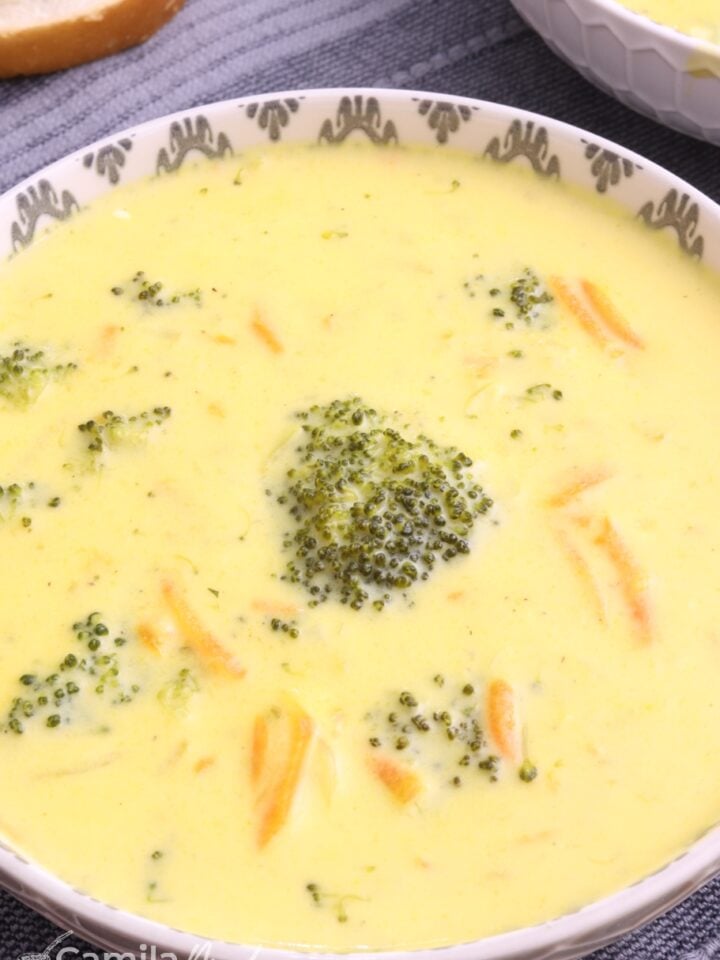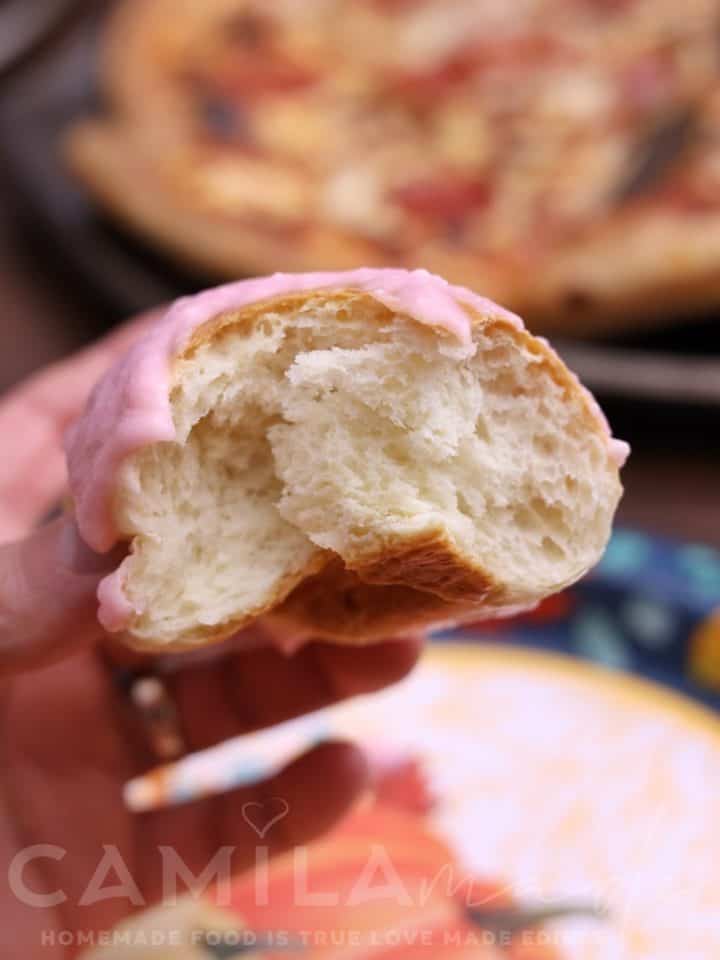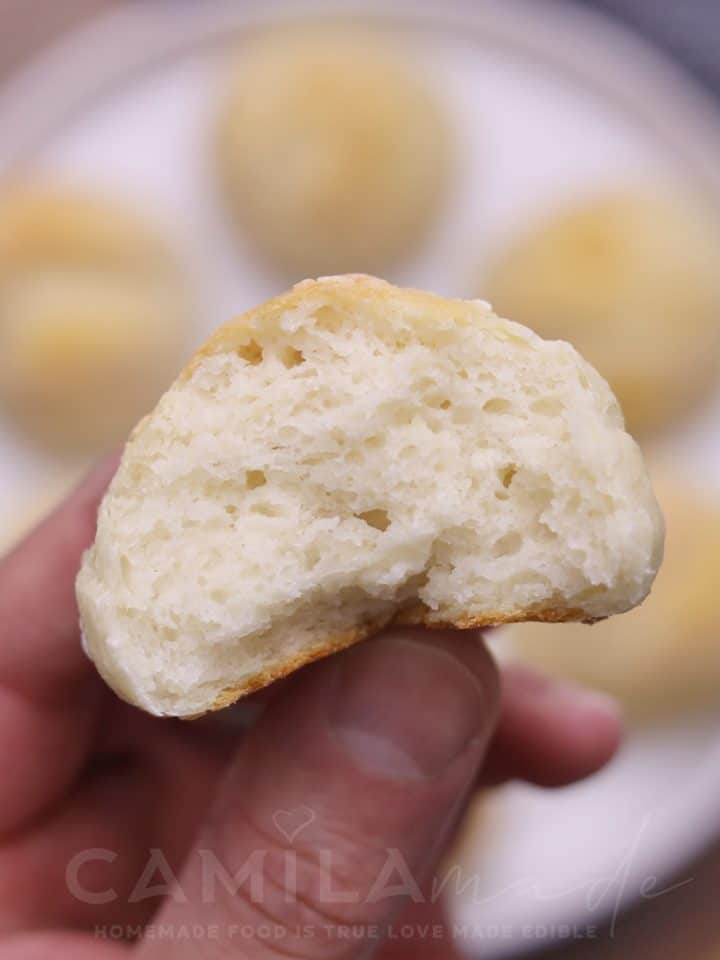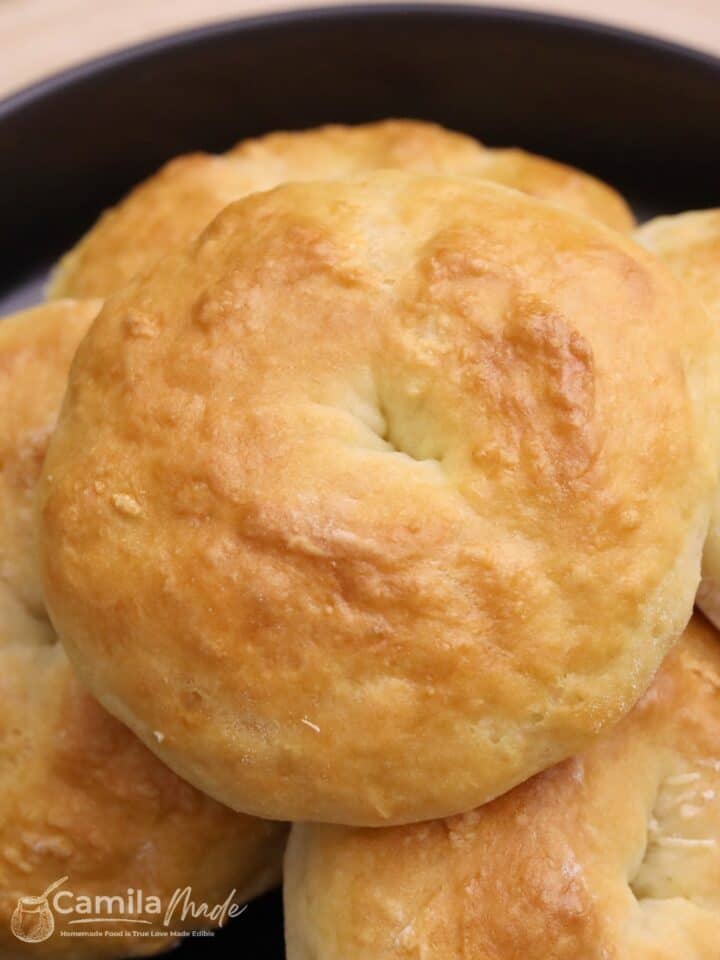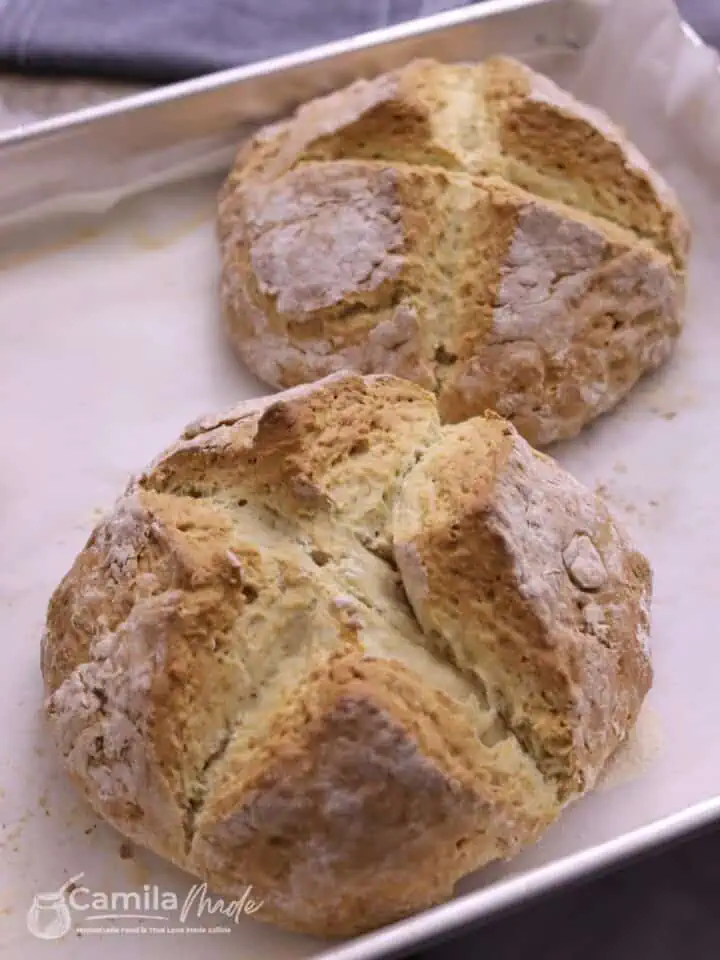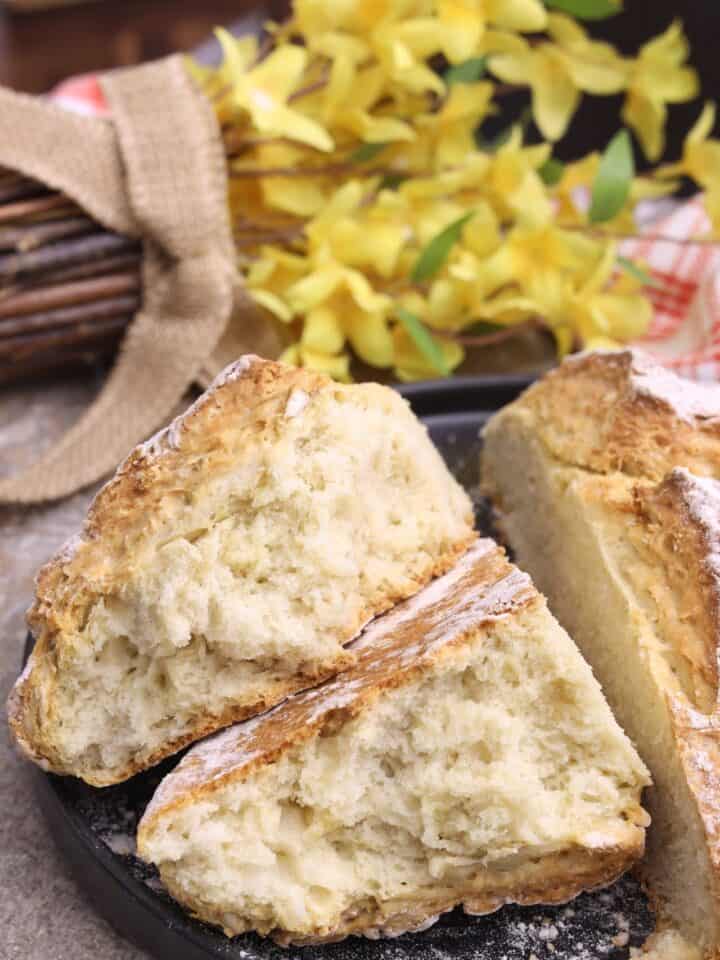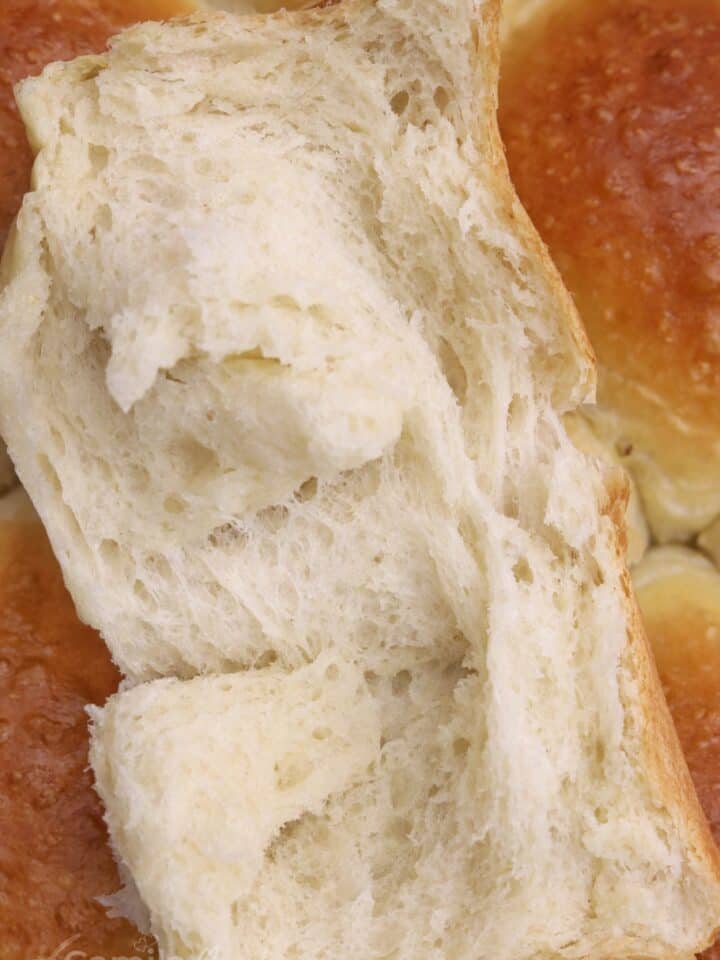Learn how to make No-Knead Focaccia bread, a simple yet flavorful recipe that’s sure to become a family favorite. With its crispy, golden crust and soft, fluffy interior, this bread is perfect for any meal—a casual dinner or a holiday gathering. It’s easy to make, requires no kneading, and turns out great every time.
Inspired by my Focaccia recipe, this version pairs beautifully with my Sopa de Tomate recipe. If you are looking for more tasty bread recipes, try my Quick No-Knead Bread or Rosemary Focaccia Recipe.
Jump to:
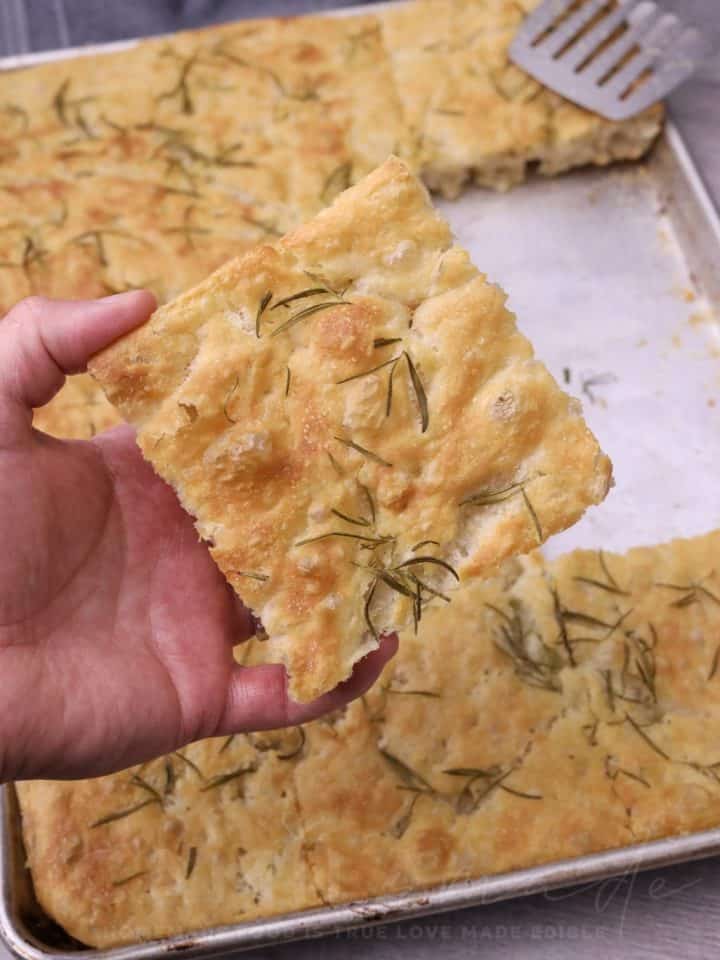
🛒 Ingredients
- Lukewarm water: Activates yeast and hydrates dough. The right temperature (110°F to 115°F) ensures a light, fluffy rise.
- Instant dry yeast: Helps the dough rise and creates airy pockets by feeding on sugars.
- Sugar: Activates yeast and adds mild sweetness.
- All-purpose flour or Bread Flour: Provides structure, making the inside soft and chewy with a crisp crust. Both flour work wonderfully, but bread flour has a higher protein content, resulting in a desirable chewy texture.
- Kosher salt: Enhances flavor and adds a crunchy, salty finish when sprinkled on top.
- Extra-virgin olive oil: Ensures a crispy crust and keeps the inside moist, adding rich flavor.
See the recipe card for quantities.
👩🍳 How to Make No-Knead Focaccia
- In a large bowl, combine flour, yeast, sugar, and salt. Stir in lukewarm water until a dough forms.
- Pour ¼ cup olive oil into another large bowl, add the dough, and turn to coat.
- Cover and let rest at room temperature for 3–4 hours until doubled. For more flavor, refrigerate for up to 24 hours.
- Coat a 13"x 18" baking sheet with ¼ cup olive oil. Transfer the dough to the pan with any leftover oil, stretch it to fit, and dimple the surface with your fingers.
- Let the dough rise in a warm spot for about 1 hour until doubled.
- Preheat oven to 425°F. Top with sea salt, rosemary leaves, and a drizzle of olive oil. Bake for 25–30 minutes until golden and crispy. Let cool slightly before slicing and serving.
Hint: Use a 13"x 9" pan if you like a thicker focaccia.
🫙 Storage & Reheating
Store focaccia by wrapping it in plastic wrap or placing it in an airtight container at room temperature.
For easier handling, cut the focaccia into smaller pieces, wrap each piece in plastic, then in aluminum foil, and store in a plastic bag for up to 3 days.
To reheat focaccia, preheat the oven to 375°F. For frozen bread, allow it to defrost at room temperature first.
Place the bread on a lined baking sheet, mist it with water, and bake on the middle rack for 6–8 minutes until golden. Cover any cut edges with foil to keep the inside soft.
For quicker methods, wrap focaccia in a damp paper towel and microwave in 30-second intervals (though it may become chewy). Alternatively, toast smaller pieces in a standard toaster on medium for a crispier texture.
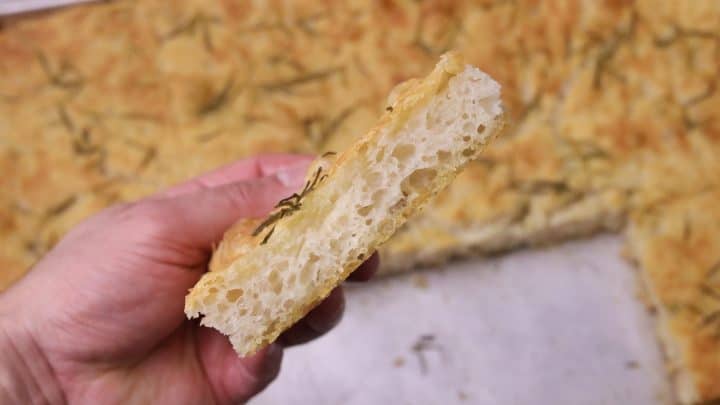
❄️ Make Ahead & Freezing
You can make this Focaccia bread up to 1 day ahead of time. To freeze, cut your focaccia into squares and flash-freeze it.
Place your bread pieces on a parchment paper–lined baking sheet so they have space between them.
Put the baking sheet in the freezer for up to 2 hours. Wrap the frozen focaccia pieces in plastic wrap, place them in freezer bags, and store them in the freezer for up to 1 month.

📝 Camila's Tips & Variations
Extra Flavor: Add minced garlic or sundried tomatoes to the dough for a delicious twist.
Herb Alternatives: Swap rosemary with thyme, oregano, or basil to change up the flavor.
Overnight Rise: For more flavor, let the dough rise in the refrigerator for up to 24 hours; this slow rise enhances the texture and taste.
Oiling the Dough: Don’t skip coating the dough with oil—it gives focaccia its characteristic golden, slightly crunchy crust.
🛠️ Frequently Asked Questions
Why didn’t my dough rise?
Check that the yeast is fresh and the water temperature is between 110°F and 115°F when mixing. Cold or too-hot water can affect yeast activation.
Why is my focaccia dough sticky?
Focaccia dough is naturally sticky, but if it’s too sticky to handle, try lightly oiling your hands or adding a tablespoon of flour at a time until manageable.
Why is my focaccia too dense?
Dense focaccia may result from insufficient rising time. Allow the dough to rise until doubled in size for a light, airy texture.
🥗 Pair with
📋 You may also like
📖 Recipe
No-Knead Focaccia
Tools
Ingredients
- 625 g all-purpose flour or bread flour
- 600 ml warm water (100°F to 115°F)
- 3 tablespoon sugar
- 2¼ teaspoons envelope instant dry yeast
- 1 Tablespoon Morton kosher salt , plus for sprinkling
- 8 tablespoons extra-virgin olive oil , divided, plus more for drizzling
- 3 spring fresh rosemary , leaves stripped from the stems
Instructions
- In a large bowl, combine the flour, dry yeast, sugar, and kosher salt. Add the lukewarm water (110°F to 115°F) and stir until the dough forms.
- In a separate large bowl, pour in ¼ cup extra olive oil, then place the dough in the bowl, turning it to fully coat in the oil. Cover with plastic wrap and let it rest at room temperature for 3 to 4 hours until it doubles in size.
- During this time, the dough will absorb the oil as it rises. If you have extra time, refrigerate for 24 hours or up to several days. The longer it rests, the more flavorful it will get.
- Coat a 13" by 18" baking sheet with the remaining ¼ cup olive oil; set aside. Gently lift the dough from the edges toward the center. Continue doing this until you've gone around the whole bowl.
- Transfer the dough onto the pan, including any leftover oil, and, using your fingertips, spread it out to fit the pan. Turn the dough over to coat with oil. Press your fingers into the dough to create dimples across the surface.
- Let the dough rise again, uncovered, in a warm area for about 1 hour or until it doubles in size. (Focaccia is meant to have an oily crust, so don't worry if it seems like a lot of oil.)
- Preheat the oven to 425°F. Sprinkle the top with kosher sea salt, rosemary leaves, and more olive oil. Bake for 25-30 minutes or until golden brown and crispy.
- Allow the focaccia to cool slightly before slicing and serving.
All nutritional information is based on third-party calculations and is only an estimate. Each recipe and nutritional value will vary depending on the brands you use, measuring methods, and portion sizes per household.
